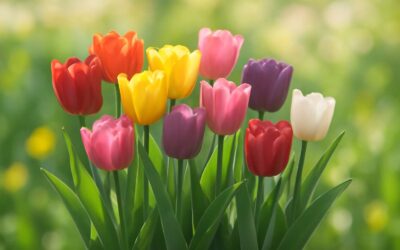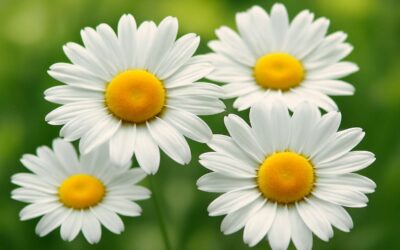Comprehensive Guide to Edelweiss Flowers
Physical Characteristics of Edelweiss
Few flowers evoke the rugged beauty of edelweiss flowers quite like this alpine icon. Their distinctive appearance is a testament to nature’s resilience, thriving in the most inhospitable mountain terrains of South Africa. These flowers possess a unique physical charm that captivates botanists and enthusiasts alike. With a velvety texture and star-shaped bloom, edelweiss flowers seem almost otherworldly, their silvery-white petals shimmering under the sun’s gaze.
The physical characteristics of edelweiss flowers are as fascinating as their symbolism. Typically, they grow in dense clusters, with each flower measuring about 2 to 5 centimeters across. Their fuzzy surface not only wards off cold but also lends them a soft, woolly texture that invites close inspection. The leaves are narrow, hairy, and grayish-green, perfectly adapted to withstand the harsh mountain climate, making edelweiss flowers a remarkable botanical marvel.
- Velvety, woolly petals that reflect sunlight
- Star-shaped blooms with a compact, dense structure
- Narrow, hairy leaves adapted for cold, high-altitude environments
Habitat and Growing Regions
In the rugged heart of South Africa’s highlands, edelweiss flowers carve a silent testament to nature’s tenacity. These delicate yet resilient blooms thrive amidst rocky crevices and alpine cliffs, where few other plants dare to venture. Their habitat is as captivating as their appearance, revealing a story of adaptation and endurance. Edelweiss flowers flourish in regions where the air is crisp, and temperatures can plummet unexpectedly, yet they stand tall, cloaked in their signature silvery fuzz.
The primary growing regions of edelweiss flowers extend across the mountainous terrains of South Africa’s Drakensberg and Cederberg ranges. These flowers favor well-drained, limestone-rich soils that mirror their European counterparts’ alpine environments. Their presence is often a sign of pristine, unspoiled wilderness, making them a sought-after species for botanists and nature lovers alike. In these high-altitude sanctuaries, edelweiss flowers paint the landscape with their starry, woolly blooms, enchanting all who encounter them.
Because of their specialized habitat, edelweiss flowers are rarely found in lowland areas. Instead, they cling to the cold, rocky slopes where their narrow, hairy leaves and dense clusters provide vital protection from the harsh elements. This unique adaptation ensures their survival in extreme conditions, turning each bloom into a symbol of perseverance in the face of adversity.
Symbolism and Cultural Significance
Across the rugged highlands of South Africa, edelweiss flowers have long been celebrated not only for their striking appearance but also for their deep-rooted symbolism. These blooms evoke a sense of resilience and purity, embodying qualities revered in many cultures. In the regions where they flourish, edelweiss flowers are more than just a botanical wonder—they are a powerful emblem of courage and enduring hope.
Historically, edelweiss flowers have held a special place in folklore and tradition. They are often seen as a symbol of rarity and noble spirit, representing perseverance amid adversity. In South African communities nestled within the high-altitude landscapes, the flower’s delicate yet hardy nature mirrors the resilience of those who live in these extreme environments. Their cultural significance is woven into stories of survival, love, and unwavering strength.
- In many alpine cultures, edelweiss flowers symbolize protection and guidance, believed to bring good luck and ward off evil spirits.
- They are also associated with romantic devotion, often given as tokens of admiration and enduring love—especially in regions where they grow naturally.
For countless generations, edelweiss flowers have transcended their physical beauty to become a heartfelt icon of endurance. Whether viewed as a national treasure or a sacred emblem, these blooms continue to inspire admiration and respect for nature’s tenacity—reminding us that even in the harshest conditions, beauty and hope can flourish. Their symbolism remains a poignant testament to the courage of those who cherish and protect South Africa’s precious wilderness.
Types and Varieties of Edelweiss
When it comes to edelweiss flowers, variety is truly the spice of life—and the most delightful surprise for enthusiasts and botanists alike. While the classic edelweiss is renowned for its star-shaped white blooms, the world of edelweiss flowers extends beyond the familiar, offering a captivating spectrum of types and varieties. From the rugged alpine terrains to the highlands of South Africa, these diverse forms showcase nature’s flair for elegance and resilience.
The most recognized variety remains the Leontopodium alpinum, often called the “true” edelweiss, celebrated for its dense, woolly appearance and iconic star shape. However, botanical explorers have identified numerous other species, each with distinctive traits. Some edelweiss flowers boast a more compact, bushy growth habit, while others display subtle variations in petal texture and coloration—ranging from pure white to creamy or even faintly yellowish hues.
For those with a penchant for taxonomy, here’s a quick overview of some notable edelweiss flowers varieties:
- Leontopodium alpinum – The quintessential alpine edelweiss, revered for its hardy nature and symbolic purity.
- Leontopodium nivale – Commonly found in icy mountain regions, showcasing a slightly more robust structure.
- Leontopodium souliei – Native to Southeast Asia, offering a fascinating twist on the traditional form.
Whether cultivated for their symbolic value or their aesthetic allure, edelweiss flowers continue to enchant with their variety. Each type tells a story of adaptation and tenacity, embodying the very essence of the resilience that makes edelweiss flowers so emblematic across diverse landscapes—including South Africa’s rugged highlands.
How to Grow and Care for Edelweiss
In the mystical realm of alpine flora, edelweiss flowers stand as resilient sentinels, their delicate, star-shaped blooms whispering stories of endurance and grace. Cultivating these enchanting blossoms in South Africa’s highlands presents a captivating challenge—one that rewards the gardener with a touch of alpine magic. Despite their reputation for thriving in cold, rocky terrains, edelweiss flowers can flourish with the right care, transforming rugged landscapes into a tapestry of pure white elegance.
To nurture edelweiss flowers successfully, understanding their unique needs is essential. They favor well-draining soil—preferably sandy or gritty—and require plenty of sunlight to emulate their natural alpine environment. Regular watering is vital during the growing season; however, overwatering can lead to root rot. A gentle boost of nutrients with a balanced, low-nitrogen fertilizer can promote healthy blooms and vigorous growth.
A simple yet effective approach involves planting edelweiss flowers in containers or rock gardens, where they can enjoy excellent drainage and air circulation. When caring for these resilient blooms, remember: less is often more. Their hardy nature means they thrive on minimal intervention, provided they are shielded from excessive moisture and frost during colder months. With patience and tender care, edelweiss flowers can become a striking emblem of natural beauty—an enduring symbol of resilience in any landscape.
Uses and Applications of Edelweiss
Edelweiss flowers are more than just stunning alpine symbols; they possess a surprising versatility that extends into various uses and applications. Their delicate, star-shaped blooms have captivated hearts for centuries, and today, their appeal goes far beyond traditional landscapes. From ornamental gardens to herbal remedies, edelweiss flowers continue to enchant with their multifaceted roles.
In the realm of natural medicine, edelweiss flowers are prized for their antioxidant and anti-inflammatory properties. Extracts derived from these resilient blooms are often used in skincare products to combat skin aging and protect against environmental stressors. Their unique chemical compounds make them a sought-after ingredient in cosmetic formulations aiming to promote skin vitality.
Beyond their medicinal potential, edelweiss flowers are also cherished for their symbolic significance. They often feature in wedding bouquets, decorative arrangements, and even in cultural rituals, symbolizing purity and resilience. For enthusiasts, cultivating edelweiss flowers in rock gardens or containers offers a captivating focal point that embodies strength in adversity.
To maximize the benefits of edelweiss flowers, consider these applications:
- Creating herbal teas infused with dried edelweiss flowers for their reputed health benefits.
- Incorporating extracts into natural skincare routines for antioxidant protection.
- Using dried blooms in floral arrangements to add elegance and symbolic meaning.
From their aesthetic charm to their therapeutic potential, edelweiss flowers continue to serve as a testament to the enduring allure of alpine flora, bringing resilience and beauty into diverse applications across South Africa’s unique landscapes.
Conservation and Sustainability
With their delicate beauty and ecological importance, edelweiss flowers demand careful conservation. These resilient blooms face threats from habitat destruction and overharvesting, making sustainable practices essential. Protecting edelweiss flowers in South Africa’s unique landscapes ensures that future generations can appreciate their symbolic and ecological value.
Effective conservation begins with awareness. Local communities, conservationists, and policymakers can collaborate through initiatives such as habitat preservation and responsible cultivation. Promoting native growth and discouraging illegal harvesting are vital steps in maintaining the integrity of edelweiss flowers’ natural populations.
To support these efforts, consider adopting practices like:
- Creating protected areas where edelweiss flowers naturally thrive.
- Encouraging sustainable harvesting methods that do not harm the plant or its environment.
- Supporting research on edelweiss flowers’ ecological roles and propagation techniques.
By embracing these strategies, we safeguard not only the resilience of edelweiss flowers but also their cultural and ecological significance. Their continued presence in South Africa’s landscapes is a testament to the importance of conscientious conservation and sustainable stewardship.
Interesting Facts and Trivia
Beneath their fragile veneer lies a treasure trove of fascinating facts about edelweiss flowers. These botanical marvels have captured imaginations for centuries, not just for their star-like appearance but for their resilient spirit. Did you know that edelweiss flowers are often dubbed the “snow queens” of the plant world, thriving in alpine environments that would make even the most seasoned mountaineer shiver?
One of the most intriguing aspects of edelweiss flowers is their remarkable ability to withstand harsh conditions. Their fuzzy hairs act like tiny thermal blankets, protecting them from cold winds and intense sunlight. Interestingly, edelweiss flowers have also become a symbol of bravery and purity, often associated with heroic tales and romantic folklore. Their rarity and symbolic importance have made them a sought-after bloom—sometimes leading to illegal harvesting that threatens their natural habitats.
For those enchanted by edelweiss flowers, knowing some interesting trivia can deepen appreciation. For instance, despite their alpine origins, edelweiss flowers have been successfully cultivated in gardens worldwide through careful propagation techniques. Their unique adaptation strategies and cultural symbolism make edelweiss flowers a botanical icon that deserves our admiration and protection.



0 Comments